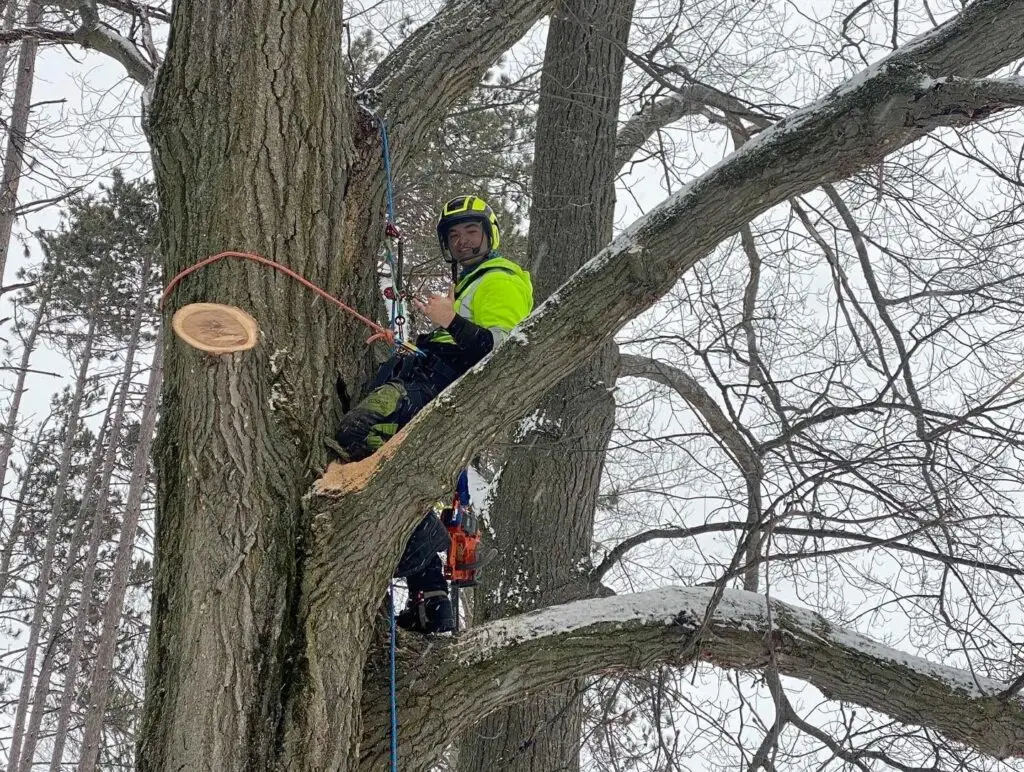Pruning trees in the winter can be a beneficial time to trim and shape your trees. The cold weather causes trees to enter a dormant state, meaning they are not actively growing and will be less affected by pruning. In addition, winter pruning can help to remove any damaged or diseased branches before the growing season begins, promoting healthy new growth in the spring.
Here are some tips for pruning trees in the winter:
- Choose the right tools: Make sure you have a good quality pruning saw or loppers, as well as gloves and eye protection. If you are working with larger branches, you may need a chainsaw or pole pruner.
- Know what to prune: Start by removing any dead, diseased, or damaged branches. These branches can harbour pests and diseases, and pruning them in the winter will help to improve the overall health of the tree. You can also remove any branches that are rubbing against each other or crossing over one another.
- Make clean cuts: When pruning trees in the winter, try to make clean cuts as close to the branch-bark collar as possible. Avoid leaving stubs, as they can invite pests and diseases. Use a pruning saw for larger branches and loppers for smaller ones. Prune the bulk of the branch off about 6-8″ away from where you plan to make your final pruning cut. This will reduce the weight on your final pruning cut and lower the chances of having a bark tear out.
- Be aware of your tree’s natural shape: It is important to maintain the tree’s natural shape as much as possible when pruning. Avoid pruning too heavily, as this can cause stress to the tree. Pay attention to the tree’s growth pattern and try to prune branches that are growing at awkward angles or are too long.
- Prune at the right time: Winter is generally a good time to prune trees, but there are a few factors to consider. If you live in an area with extremely cold weather, it may be best to wait until the weather warms up slightly. You should also avoid pruning trees in the winter if there is a heavy snow-load or ice build up on the branches. The extra weight could and flex of the branches could make it difficult to get a clean pruning cut.
- Hire a professional: If you are not comfortable pruning your tree or if the tree is large, it may be a good idea to hire a professional arborist. They have the knowledge, experience, and equipment to properly care for your trees and can identify any potential problems.
Remember to always be cautious when pruning trees in the winter, as it can be a dangerous activity. If you are unsure about how to prune a tree, it is always best to consult with a professional. With proper care and pruning, your trees will thrive and add beauty to your landscape for years to come.


